Home
A comprehensive resource for safe and responsible laser use
US: Bird wearing tiny goggles safely flies through laser beam
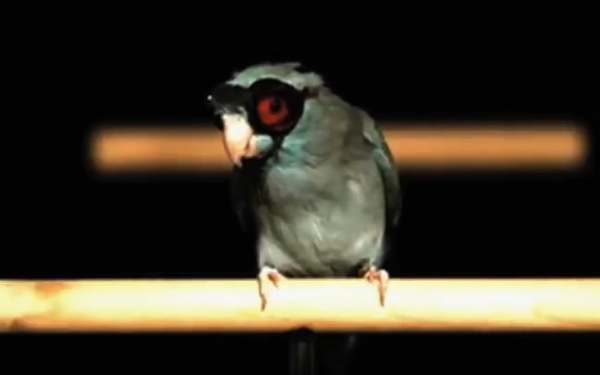
Researchers at Stanford University wanted to get data on how much lift a bird generates. To monitor the wing wake and vortices, they used a laser beam spread by a lens into a plane of light. The light source was a Litron brand double-pumped Neodymium-doped yttrium lithium fluoride (Nd:YLF) laser. The light was green at 527 nanometers, and had a pulse repetition rate of 1 kHz.
A non-toxic mist in the air illuminated the light sheet, just like theatrical fog used at concert laser light shows. As the bird flew through the light, the mist scattered and showed the air patterns, in a technique called “particle imaging velocimetry” or PIV.
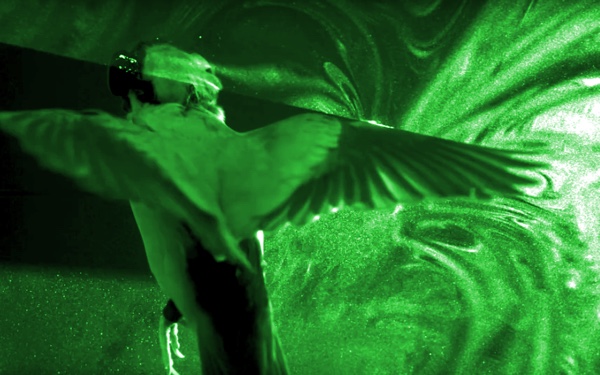
Bird-sized goggles were used to prevent any harm to the bird’s eyesight. The lenses came from human laser safety glasses and had an optical density of 6, meaning that they transmitted only 0.0001% of the laser light. The frame was 3D printed and was held on by veterinary tape. The goggles weighed 1.68 grams, which is roughly 6% of the bird’s body weight (equivalent to 9 pound glasses on a 150 lb. human).
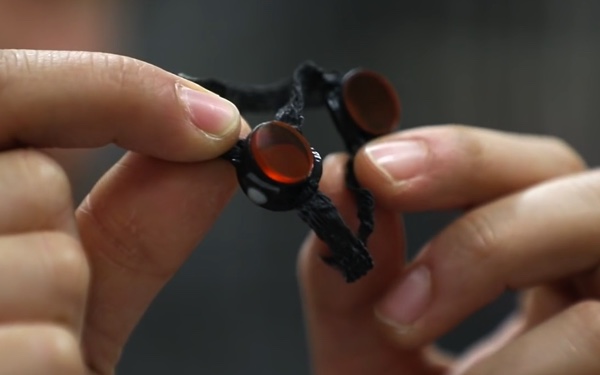
Before beginning the series of experiments, the researchers trained four parrotlets “through many small stress-free steps of habituation.” After “several months of effort” with the birds, only one — a parrotlet named “Obi” — voluntarily flew with the laser goggles. According to the researchers, “[a]ll training and experimental procedures were approved by Stanford's Administrative Panel on Laboratory Animal Care.”
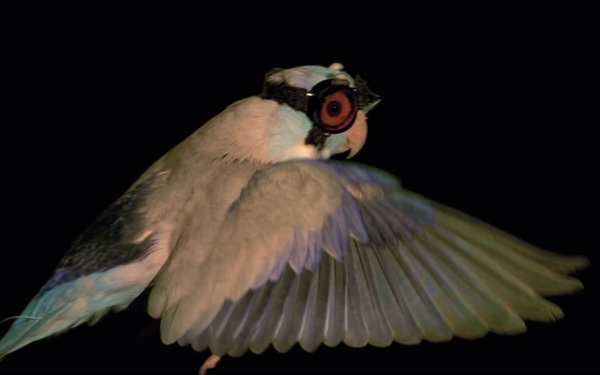
Twelve cameras were used. Four high-speed stereo cameras were for PIV particle motion recording and recorded 4000 frames per flight. Eight cameras were for recording Obi’s wing and head kinematics as it flew from one perch, through the laser light plane, to a landing perch.
The results give “the clearest picture to date of the wake left by a flying animal.” Unexpectedly, the wing tip vortices did not stay stable as happens with aircraft, but instead broke up quickly and violently. This had not been predicted by any previous models.
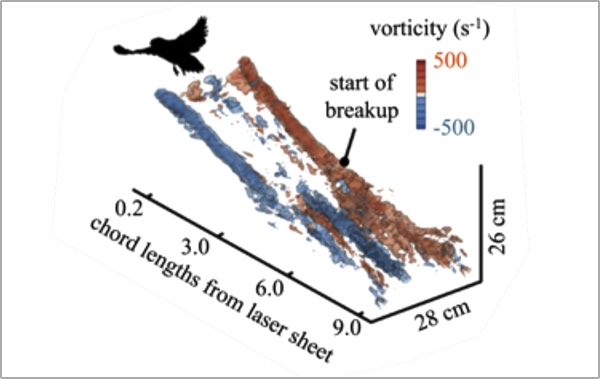
From a Stanford University news story, picked up by numerous websites and news outlets including Popular Mechanics, NBC News, The Verge, Optics.org and many others. The results were published December 6 2016 in the journal Bioinspiration & Biometrics, volume 12, number 1. Thanks to Drs. Ronald K.A.M. Mallant, MSc. for pointing out an error in our description of OD 6 density; the error has been corrected.